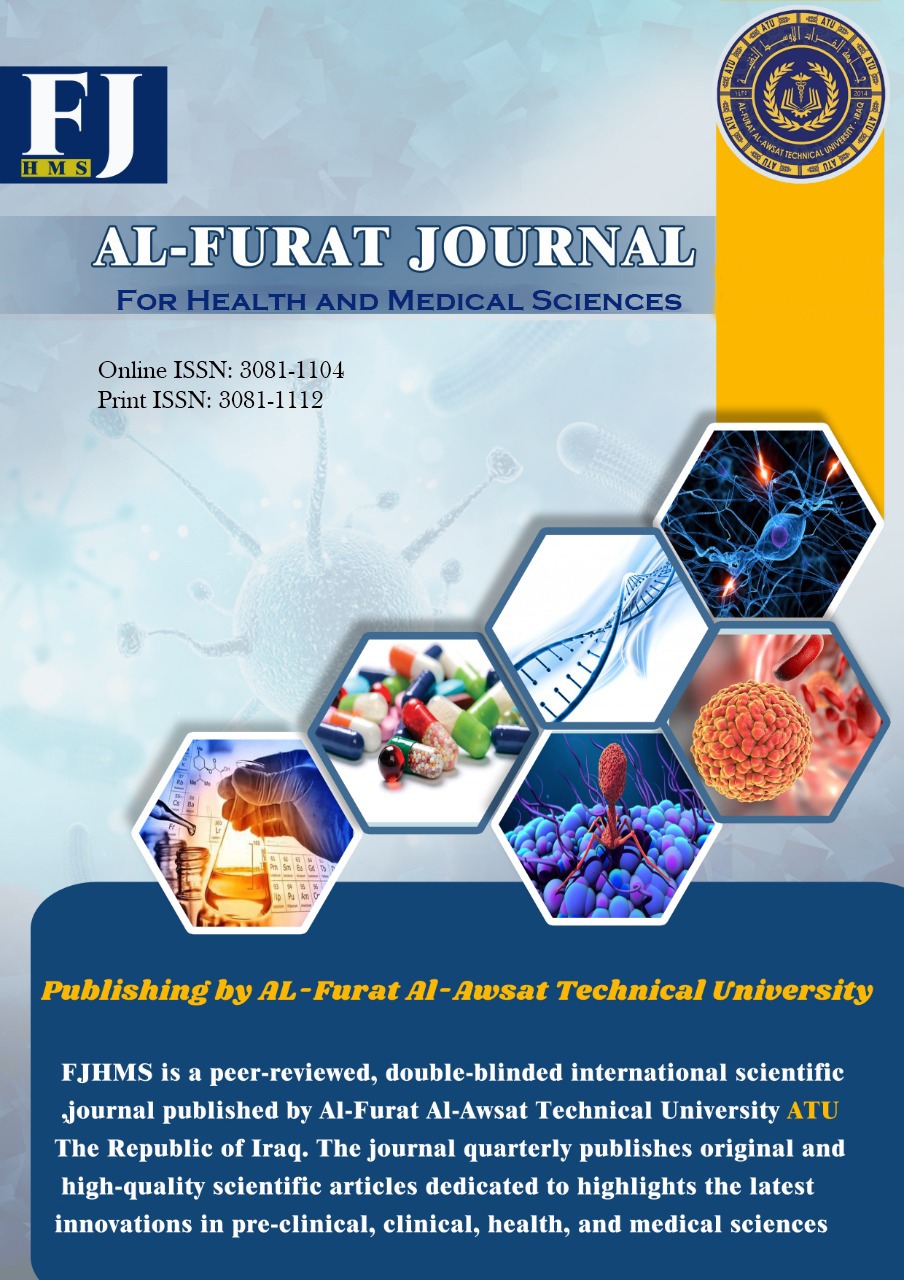Electrochemical Behavior of Magnesium Sulfate Mediated Glassy Carbon Electrode in Rabbit's Blood Samples
Keywords:
cyclic voltammetry; magnesium sulfate; anti-oxidative reagent; blood medium; pH; scan rate; concentration.Abstract
Glassy carbon electrode (GCE) was used to observed the chemical properties of magnesium sulfate solution in electrolyte of rabbit's blood medium by cyclic voltammetry. The study wasaimed to find the electrochemical behavior of magnesium ions Mg(II) in the blood samples to find redox reaction. The study focused on the redox reaction of current peaks for magnesium ions in blood.The results were found one of reduction current peak appeared at -0.8 V. The research included different voltammetric study for the cathodic current peak of Mg ions, such as in different concentrations, scan rates, pH, and reliability in blood medium. A low detection limit was found of Mg(II) at 0.1 – 0.4 mM, with good linear of relationship of different scan rates and high sensitivity of 0.9914. Also, the cathodic current peak of Mg ions was enhanced at alkaline blood solution of pH 8-10. So, we can said that magnesium compound in blood medium act as anti-oxidative reagent, which can used as a nutritional supplements, and causes its deficiency in the human body to serious health effects.
Published
Issue
Section
License
The Corresponding Author, with the consent of all coauthors, hereby transfers to the FJHMS the copyright ownership in referenced Article, including all versions in any format now known or the hereafter developed. If the Article is not accepted by FJHMS or withdrawn prior to acceptance, this transfer will be null and void.
In order for your article to be distributed as widely as possible your grant the FJHMS an exclusive right to:
- Publish, reproduce, distribute, display, and store the Article in all forms, formats, and media known or later developed (including without limitation in print, digital, and electronic form) throughout the world;
- Translate the Article into other languages, create adaptations, summaries or extracts of the Article or other derivative works based on the Article and exercise all of the rights set forth in (a) above in such translations, adaptations, summaries, extracts, and derivative works;
- License others to do any or all of the above
All accepted Articles become the property of FJHMS and may not be published elsewhere without written permission of the FJHMS





